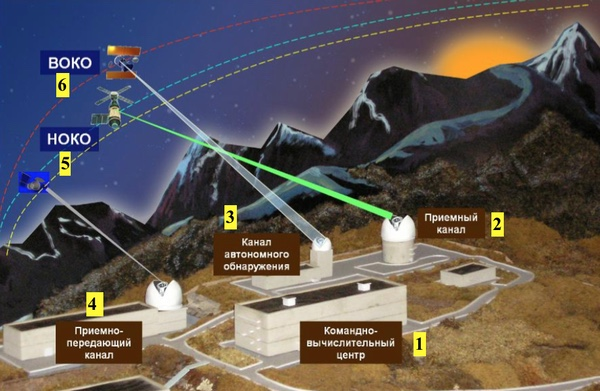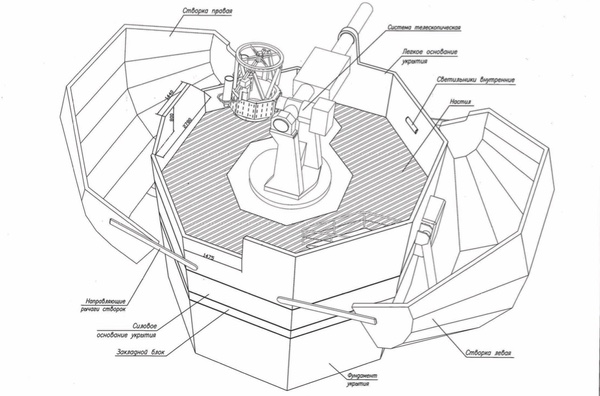Flying over my airspace, "flash blindness" you!Russia's research and development of anti -satellite laser weapons can permanently "blind" enemy satellites?
Author:Red Star News Time:2022.07.20
As space is more important for military operations, Russia is improving its anti -satellite capacity. According to reports, Russia is currently building an advanced laser system called "Kalina" in its space facilities, which aims to make enemy satellites "blind".
It is understood that as early as the 1970s, the Russian government proposed the system of the system. However, in 2011, Kalina's R & D project was officially launched, and the project has repeatedly delayed the project for more than ten years. Recently, Google Earth Images have shown that the research and development of the weapon is in progress. Kalina will supplement the mobile laser dazzling device named "Presvet" starting from the end of 2019.
"Kalina" is said to make the satellite permanently "blind"
Belgian scholar Bart Hedrics published a paper in the Space Review saying that recently Google Earth images show that Russian space facilities seem to be building a complex laser system Kalina, which will aim at foreign imaging satellites fly over the Russian territory. The optical system can make the satellite permanently "blind."

↑ Krona Lidar Complex
It is reported that Kalina's construction is responsible for the Russian Ministry of Defense and is part of the Russian Crona Lidar Complex. The location is located in remote areas southwest of Russia. There are also the world's largest single-diameter single radio telescope RATAN-600. It is reported that KRONA is composed of a few kilometers of radar systems and lidar, and Kalina is a new laser system used to expand laser radar.
Kalina is obviously different from other laser called "dazzling". The purpose of the latter is only a short -term blind light system, and Kalina is a laser system designed for "electro -light war". It can make the hostile satellite permanently "blind" by emitting bright short pulse laser.

↑ Kalina laser telescope
Hendricks found from the Russian patent and procurement documents that the Kalina laser system also has an independent tracking system with adaptive optics to help it better reduce atmospheric interference. In addition, the laser itself also has a laser-receiving system to measure the laser returned from the target, so as to more accurately target the optical system on the target object. It is understood that the structure of this laser has been growing in anti -satellite activities in recent years.
Western experts: Russia is determined not to let the enemy shoot its territory from space
Hendricks pointed out that Russia is developing three laser dazzling vessels to deal with satellites, and Kalina is one of them. Since 2001, Russia has been developing machine laser Sokol-Eshelon, but the current state is unclear.
Another vehicle laser system "Preeswater" has been put into use. The system can be jointly deployed with the mobile intercontinental ballistic missile forces and can prevent foreign reconnaissance satellites from tracking the trajectory. Russian Defense Industry Deputy Prime Minister Yuri Borisov recently confirmed that it can be used for anti -satellites in a speech. He said that it can "blindly" as high as 1500 kilometers, which may be the opponent's reconnaissance satellites that "disable" them when they pass the Russian territory.
In addition, Zadira, a new Russian drone laser system, also deployed in the Russian -Ukraine conflict, which caused heated discussions.
Hendricks believes that Russia has designed three laser systems for similar purposes, which obviously attaches great importance to not allowing the enemy to have the opportunity to shoot its territory from space. The goals of these systems are not only the government's reconnaissance satellites, but also many commercial optical imaging satellites currently on the track. Kalina, Preeswater, and Sokol-Eshelon are invalid for radar reconnaissance satellites, but Russia has at least two ground mobile electronic interference systems (Krasukha-4 and Divnomorye). According to reports, they can interfere with the operation of such satellites.
In addition to the dazzling optical sensors, laser may also be used for physical destroying the target. In a recent speech, Borisov also revealed that Russia is studying a stronger laser system than Preeswater.
Red Star reporter Wang Yalin intern Yin Keran
Edit Zhang Xun
- END -
Not only in entertainment, the value of the game, have the media noticed?

Original: Li LeiGuideAs the medium of information dissemination, it is one of the ...
Deepen China -Japan exchanges and cooperation to achieve win -win development
